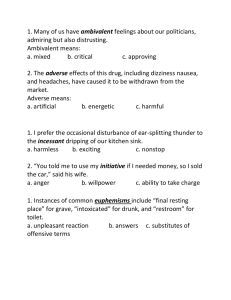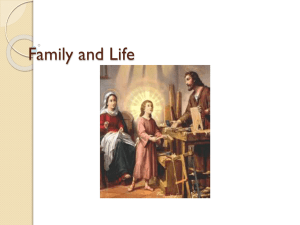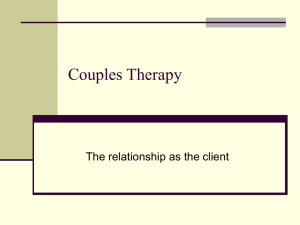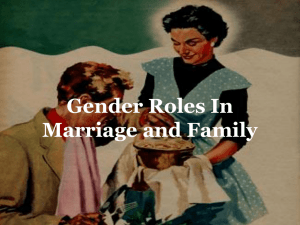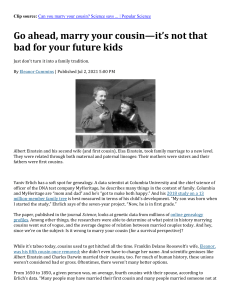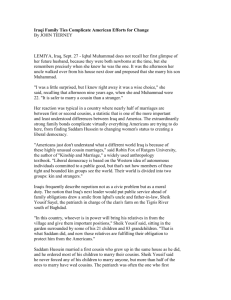Multi Generation Isolated Community Population Lower Limit
advertisement
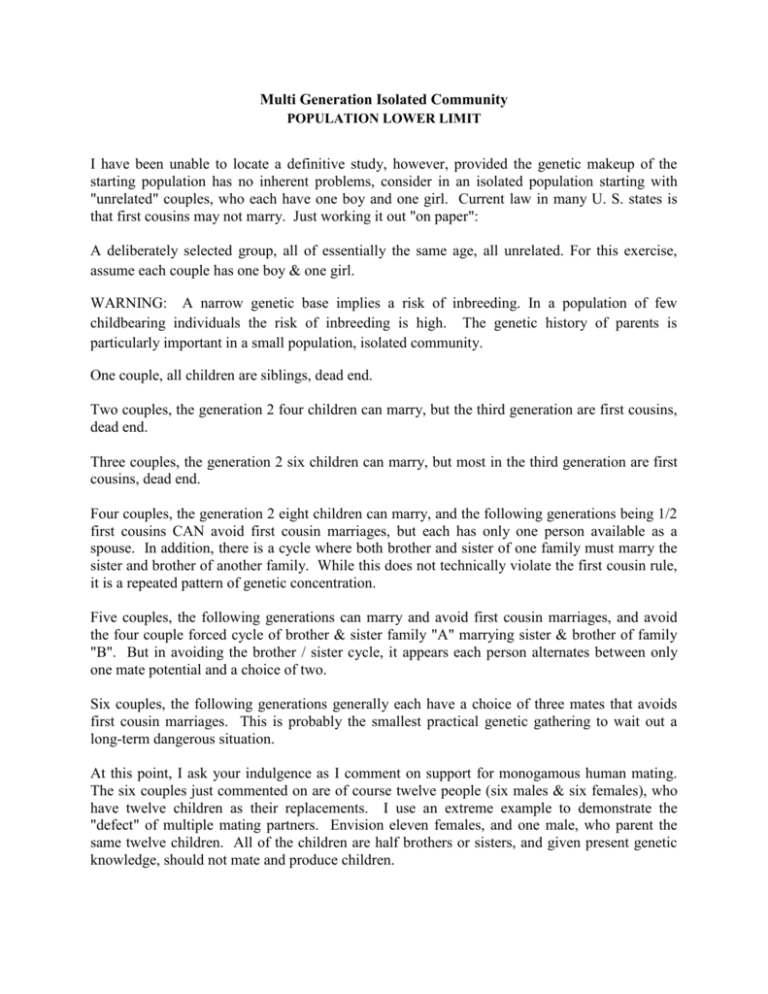
Multi Generation Isolated Community POPULATION LOWER LIMIT I have been unable to locate a definitive study, however, provided the genetic makeup of the starting population has no inherent problems, consider in an isolated population starting with "unrelated" couples, who each have one boy and one girl. Current law in many U. S. states is that first cousins may not marry. Just working it out "on paper": A deliberately selected group, all of essentially the same age, all unrelated. For this exercise, assume each couple has one boy & one girl. WARNING: A narrow genetic base implies a risk of inbreeding. In a population of few childbearing individuals the risk of inbreeding is high. The genetic history of parents is particularly important in a small population, isolated community. One couple, all children are siblings, dead end. Two couples, the generation 2 four children can marry, but the third generation are first cousins, dead end. Three couples, the generation 2 six children can marry, but most in the third generation are first cousins, dead end. Four couples, the generation 2 eight children can marry, and the following generations being 1/2 first cousins CAN avoid first cousin marriages, but each has only one person available as a spouse. In addition, there is a cycle where both brother and sister of one family must marry the sister and brother of another family. While this does not technically violate the first cousin rule, it is a repeated pattern of genetic concentration. Five couples, the following generations can marry and avoid first cousin marriages, and avoid the four couple forced cycle of brother & sister family "A" marrying sister & brother of family "B". But in avoiding the brother / sister cycle, it appears each person alternates between only one mate potential and a choice of two. Six couples, the following generations generally each have a choice of three mates that avoids first cousin marriages. This is probably the smallest practical genetic gathering to wait out a long-term dangerous situation. At this point, I ask your indulgence as I comment on support for monogamous human mating. The six couples just commented on are of course twelve people (six males & six females), who have twelve children as their replacements. I use an extreme example to demonstrate the "defect" of multiple mating partners. Envision eleven females, and one male, who parent the same twelve children. All of the children are half brothers or sisters, and given present genetic knowledge, should not mate and produce children. Six extended families does not however provide a wide safety margin (i.e. for sicknesses or accidents) or the ability to maintain and pass on specialized knowledge and skills, or maintain and develop much technology. If we assume the initial group begins with members of random age, the likelihood of practical mate matches in a gathering of just six families is reduced. Tossing around some random numbers, children born to couples at some point between are 18 and 36. We could easily find an 18-year or more age gap between potential mates. Increasing the number of families by a factor of 3 (to 18 families of random age) in theory reduces the likely mate average age gap to 6 years. (See discussion elsewhere of 20 homestead “units".)



